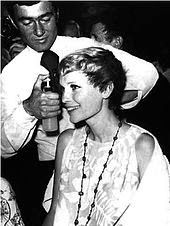Remembering Vidal Sassoon

A couple of years ago, during Neill Corporation’s Serious Business® conference, I had the pleasure of meeting Vidal Sassoon. This week, as the entire beauty industry mourns the loss of this legend, I realize how lucky I am to have met him. While I am no hair expert, I did know that he was the one who had been responsible for Mia Farrow’s hair in Rosemary’s Baby, one of the scariest movies I had watched as a teenager. We chatted briefly at a cocktail reception – a conversation I am sure he would never remember, but that I have relived in my head a few times this week. We talked about contemporary art and about our “Harvard” connection (he told me he always thought of his academies as “the Harvard of hair”).

Any “rags to riches” story fascinates me, and his is certainly that. He was born on January 17, 1928, in Hammersmith, London, and spent his early childhood in extreme poverty. His mother placed him in a Jewish orphanage early on, where he stayed for seven years. He left school at age 14 to start a hairdressing apprenticeship, eventually training under flamboyant hairdresser Raymond Bessone. Sassoon opened his own salon on Bond Street in the 1954. In 1957, he began a collaboration with Mary Quant, the British fashion designer widely known as the “mother of the miniskirt.”
Moving to the US, he opened his first U.S. salon in New York in 1965. From there, he built a multi-million dollar hair corporation, whose slogan “If you don’t look good, we don’t look good” is said to have inspired L’Oreal’s “Because you’re worth it” slogan. In 1982, he sold his business to to Richardson-Vicks, which was then bought by Procter & Gamble in 1985.
What Vidal Sassoon may best be remembered for will be liberating women from weekly trips to the salon and hours spent under hair dryers. Indeed, when he created his iconic geometric “Bauhaus inspired” five point cut in 1963 (first modeled by Grace Coddington), he brought freedom to hair – no longer did hair sit atop the head like a hat. His “wash and wear” philosophy meant that hair could now move with its owner. He brought hair’s natural movement and shine to the forefront, revolutionizing the hair industry, and the lives of women everywhere.
